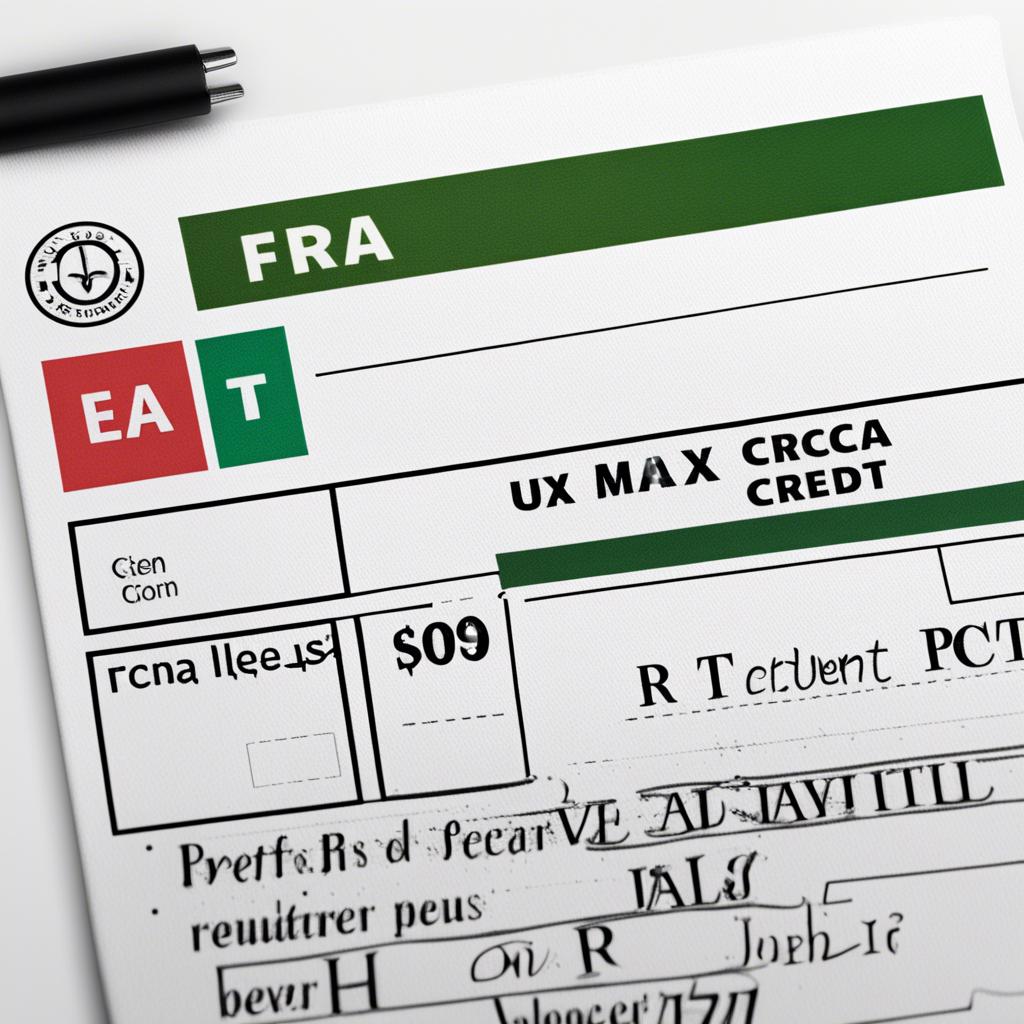The Families First Coronavirus Response Act (FFCRA) Tax Credit is an essential component of the government’s response to the COVID-19 pandemic. As businesses grapple with the challenges brought on by the virus, this tax credit aims to provide some much-needed relief. In this article, we will delve into the intricacies of the FFCRA Tax Credit, understanding its purpose, eligibility criteria, and how businesses can claim it. So, grab a cup of coffee, get comfortable, and let’s explore this crucial aspect of pandemic tax relief together.
FFCRA Tax Credit: A Comprehensive Guide to Understanding and Maximizing Benefits
The FFCRA (Families First Coronavirus Response Act) Tax Credit is a powerful tool that can help businesses and individuals navigate the economic challenges caused by the COVID-19 pandemic. This comprehensive guide will provide you with everything you need to know about understanding and maximizing the benefits of this tax credit.
First and foremost, it’s important to understand what the FFCRA Tax Credit entails. The FFCRA requires certain employers to provide employees with paid sick leave and expanded family and medical leave for specific reasons related to COVID-19. To offset the cost, eligible employers can claim a tax credit for the amount paid to employees who take leave under the FFCRA.
Maximizing the benefits of the FFCRA Tax Credit starts with knowing who is eligible. The tax credit is available to businesses with less than 500 employees and self-employed individuals, subject to certain criteria. It’s crucial to familiarize yourself with the qualifications to ensure you meet the necessary requirements.
Understanding the different types of leave covered by the FFCRA is essential. The act provides for two types of paid leave: Emergency Paid Sick Leave (EPSL) and Emergency Family and Medical Leave Expansion Act (EFMLA). Each type has its own set of qualifying reasons and benefit limits. Being aware of these details will allow you to make informed decisions and fully utilize the tax credit.
Additionally, it’s important to keep track of the documentation required to support your claim for the FFCRA Tax Credit. Keep records of employee requests for leave, relevant information concerning the reasons for leave, and documentation of the wages paid. Proper documentation is essential for maximizing the benefits and avoiding any potential issues with the IRS.
In conclusion, the FFCRA Tax Credit can be a significant financial support during these challenging times. By understanding the eligibility criteria, types of leave, and necessary documentation, you can effectively navigate this program and maximize the benefits for your business or yourself. Remember to consult with a tax professional to ensure you’re maximizing your opportunities and complying with all applicable regulations.

Introduction to FFCRA Tax Credit: Exploring its Purpose and Eligibility Requirements
The FFCRA tax credit is a valuable incentive designed to help employers and employees navigate the challenges brought on by the COVID-19 pandemic. This tax credit was introduced in response to the Families First Coronavirus Response Act (FFCRA), enacted in March 2020, which aimed to provide paid leave to employees affected by the pandemic.
The purpose of the FFCRA tax credit is to help employers cover the costs of providing paid sick leave and expanded family and medical leave to their employees. It serves as a financial lifeline for businesses, especially those who have been significantly impacted by the pandemic and are struggling to meet their payroll obligations.
Eligibility for this tax credit is based on several key criteria. Firstly, employers must have fewer than 500 employees, and the leave must be provided for specific reasons related to COVID-19. These reasons include employees who are subject to a federal, state, or local quarantine or isolation order, employees who have been advised by a healthcare provider to self-quarantine, and employees who are experiencing symptoms of COVID-19 and seeking medical diagnosis.
Furthermore, the FFCRA tax credit applies to both full-time and part-time employees, including those who are self-employed. It provides a dollar-for-dollar reimbursement for the cost of providing leave, including both the leave wages paid and the employer’s share of health insurance costs during the leave period.
In conclusion, the FFCRA tax credit offers crucial support to employers as they navigate the challenges brought on by the pandemic. By understanding its purpose and eligibility requirements, businesses can take full advantage of this valuable incentive and provide necessary benefits to their employees during these difficult times.

How to Calculate FFCRA Tax Credit: A Step-by-Step Breakdown for Employers
Welcome to our guide on how to calculate FFCRA tax credit! As an employer, understanding your eligibility and the process involved in claiming this tax credit is crucial. The Families First Coronavirus Response Act (FFCRA) provides certain employers with tax credits to cover the cost of providing employees with paid sick leave and expanded family and medical leave for reasons related to COVID-19.
To calculate your FFCRA tax credit, follow these simple steps:
- Determine if you qualify: The FFCRA tax credit applies to private-sector employers with fewer than 500 employees and certain government employers. Before proceeding, ensure that you meet these eligibility criteria.
- Identify eligible employees: Determine which employees are eligible for FFCRA leave. This includes employees who are unable to work or telework due to specific COVID-19 related reasons.
- Calculate the amount of paid leave: Determine the amount of paid sick leave or expanded family and medical leave you need to provide to eligible employees. Remember, under FFCRA, the maximum amount of paid leave varies depending on the reason for leave.
- Calculate your tax credit: The tax credit you can claim is equal to 100% of the qualified sick leave wages and qualified family leave wages paid, plus the allocable cost of providing qualified health plan expenses, and the employer’s share of Medicare tax on the qualified leave wages.
- Report and claim your credit: Include the total FFCRA tax credit amount on your quarterly federal employment tax return (Form 941 or Form 944) as a credit against the taxes you owe, or request an advance payment by filing Form 7200.
Remember, it’s essential to keep accurate records of FFCRA leave requests, amounts paid, and any supporting documentation. For a more comprehensive understanding of the FFCRA and tax credit calculations, consult the official IRS guidance and consult with a tax professional if needed. By taking advantage of the FFCRA tax credits, employers can provide vital support to their employees while alleviating some of the financial burden during these challenging times.

Strategies for Maximizing FFCRA Tax Credit: Ensuring Compliance and Optimizing Benefits
In order to make the most of the FFCRA tax credit, it is important to understand the strategies that can help you ensure compliance and optimize the benefits. By following these strategies, you can navigate the complexities of the FFCRA and take full advantage of the tax credits available to your organization.
Evaluate Eligibility
The first step in maximizing the FFCRA tax credit is to determine if your organization is eligible. Review the requirements and guidelines outlined by the IRS to ensure that you meet all the necessary criteria. Evaluate the number of employees in your organization, the reasons for leave, and the duration of leave to determine your eligibility.
Track Employee Leave
In order to claim the tax credit, it is essential to accurately track the leave taken by your employees. Implement a system to record and document all employee absences due to COVID-19 related reasons. This will help you calculate the eligible wages and the corresponding tax credits.
Reconcile Payroll Data
To maximize the FFCRA tax credit, it is important to reconcile your payroll data. Ensure that the leave wages paid to employees align with the qualified reasons for leave. Verify that your payroll records include the necessary information, such as the names of employees, dates of leave, and the amounts paid.
Seek Professional Guidance
Given the complexities of the FFCRA tax credit, it may be beneficial to seek professional guidance. Consulting with tax and HR professionals who are knowledgeable about the FFCRA can help you navigate the rules and regulations effectively. They can provide insights and recommendations tailored to your organization’s specific circumstances.
By implementing these strategies, you can not only ensure compliance with the FFCRA requirements but also maximize the tax credits available to your organization. Remember to stay updated on any changes or updates to the FFCRA provisions to ensure ongoing compliance and optimization.

Important Considerations for Claiming FFCRA Tax Credit: Common Misconceptions and Best Practices
Many employers are still navigating the complexities of the Families First Coronavirus Response Act (FFCRA) and its corresponding tax credits. It’s important to understand the key considerations and debunk common misconceptions surrounding the FFCRA tax credit. By familiarizing yourself with these best practices, you can ensure that you are properly claiming the credits and maximizing your benefits.
One common misconception is that only certain employers are eligible for the FFCRA tax credit. In fact, almost all private employers with fewer than 500 employees are eligible to claim the tax credit for qualified leave wages paid to employees affected by COVID-19. This includes both full-time and part-time employees, as well as those who are on leave due to their own health condition or to care for others.
Another important consideration is that the FFCRA tax credit is available for up to two weeks (80 hours) of paid sick leave wages and up to an additional 10 weeks of paid expanded family and medical leave wages. You should ensure that you accurately calculate the amount of qualified leave wages to claim for each employee, taking into account any caps or limitations outlined in the legislation.
To simplify the process of claiming the tax credit, it is recommended that employers maintain thorough documentation. This includes records of employee leave requests, supporting documentation for the reasons outlined in the FFCRA, and any information related to the calculation of wages and tax credits. By keeping organized records, you can easily substantiate your eligibility for the tax credit in the event of an audit.
It’s also worth noting that employers may face potential pitfalls if they fail to properly report the FFCRA tax credit on their federal tax return. To ensure compliance and avoid any penalties, consider consulting with a qualified tax advisor or HR professional who can guide you through the process and help you make the most of the available tax credits.
In summary, understanding the important considerations for claiming the FFCRA tax credit is crucial for employers aiming to maximize their benefits while meeting compliance requirements. By dispelling common misconceptions and implementing best practices, you can confidently navigate the complexities of the FFCRA and ensure that you’re optimizing your tax credits during these challenging times. And that concludes our deep dive into the world of the Families First Coronavirus Response Act (FFCRA) Tax Credit. We hope this article has shed light on the intricacies of this valuable tax incentive and how it can benefit both employers and employees during these challenging times.
It is important to remember that the FFCRA Tax Credit is a crucial provision aimed at easing the burden on businesses and individuals affected by the pandemic. By providing eligible employers with tax credits for providing paid sick leave and family leave to their employees, the government aims to promote public health and economic stability.
Throughout this article, we explored the various aspects of this tax credit, from the eligibility requirements to the calculation of the credit itself. We delved into the different types of leave covered under the FFCRA, including emergency paid sick leave and emergency family and medical leave. We also discussed the maximum amount of pay that can be considered for each type of leave and the duration of these benefits.
It is noteworthy that the FFCRA Tax Credit is not only applicable to employers who are directly obligated to provide these benefits but also to those who voluntarily choose to do so. This incentivizes businesses to prioritize the well-being of their employees, while also mitigating the financial strain that these additional expenses may pose.
As we have seen, the FFCRA Tax Credit offers significant relief for employers by offsetting their tax liabilities and ensuring that they are fairly compensated for providing essential leave benefits. It not only provides a tangible financial benefit but also reinforces the value of compassionate and responsible business practices.
Navigating the world of taxes and government regulations can be a daunting task, especially during these tumultuous times. However, by understanding and taking advantage of the FFCRA Tax Credit, employers can proactively support their workforce while simultaneously protecting their bottom line.
Remember, it is crucial to consult with a professional tax advisor or accountant to ensure you are correctly interpreting and implementing the FFCRA Tax Credit provisions according to your unique circumstances. They can guide you through the complexities, maximize your benefits, and ensure compliance with all relevant regulations.
In conclusion, the FFCRA Tax Credit represents a vital tool for businesses and individuals alike as they weather the storm caused by the COVID-19 pandemic. By prioritizing the health and well-being of employees and remaining informed about such government initiatives, we can strive toward a more resilient and united future. Together, we can overcome the challenges and emerge stronger on the other side.





